Wednesday, November 16, 2011
Mark and Gaz
One of the group of plants we are frequently asked about are the Scheffleras growing in our garden. In relation to my previous post about having blog backlogs, this is one of the topics I was meaning to feature much earlier in the year but never did get round to. I did however start to write a lengthy post about it a few months ago and was halfway through but some other things got in the way and now it belongs to the list of our 'unfinished entries'. I'm sure I'll still be able to finish that lengthy post at some point, but also it might be spring by then and I will have to add a bit more to it as an update.
The least I can do for now is to show how some of them are currently doing in our garden, coupled with a more condensed write up. Without further ado, here are just a few of the several Scheffleras we have in the garden (a photo of a bigger S. taiwaniana can be seen in the post Mornings and Weekends) .
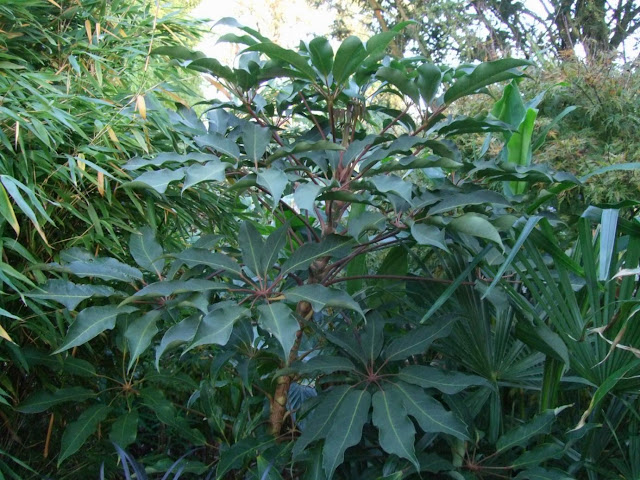 |
| Schefflera aff. chapana |
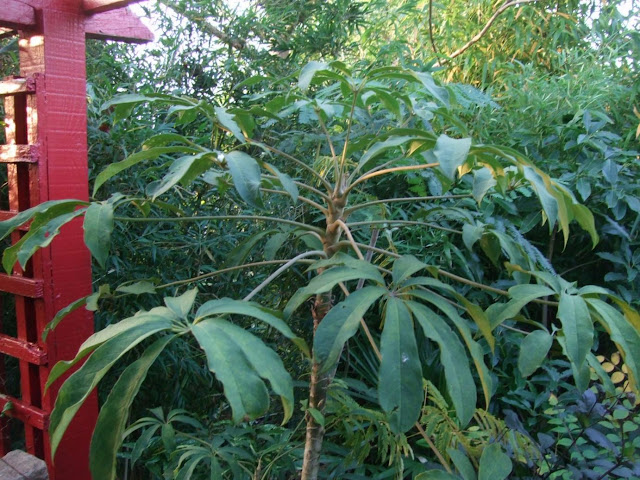 |
| Schefflera rhododendrifolia (syn. impressa) |
Most of these Scheffleras are relatively new introductions to the western world, from collections done by individual, modern day plant hunters. Coming from high altitude areas of China and Vietnam they have the potential to be suitable for permanent planting in certain parts of Northern Europe and the US. One or two types however have been in the UK for a few decades now, sourced from earlier expeditions undertaken by various botanical institutions and have been growing in their collections since then (and a bit of material made it's way into the nursery trade and propagated successfully).
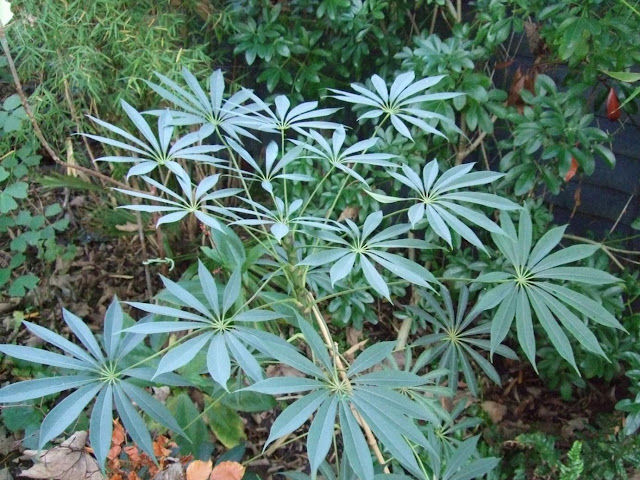 |
| Schefflera taiwaniana |
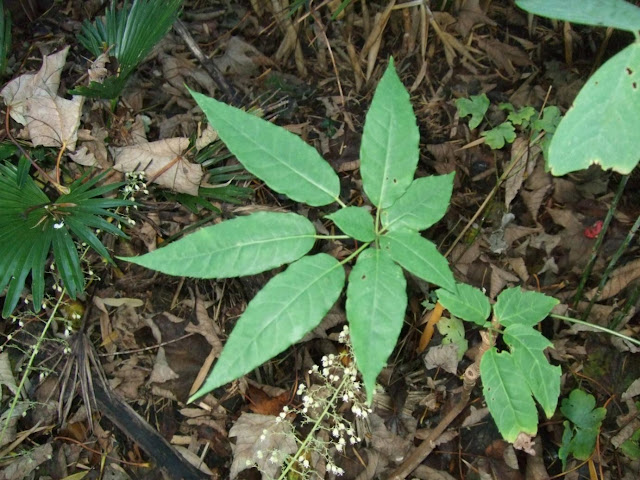 |
| Schefflera aff. brevipedicellata (or what's left of it as it's currently going deciduous) |
It's one of my favourite group of plants and I find them elegant and attractive, hence I enjoy collecting them. I'm also keen on trying out these new introductions in our garden as they come along, to see if they sail through the winters here and consequently thrive. The results have been mixed but mostly it's been good and several are doing really well now. I do however, choose which ones to plant out and try (rather than risk all of the new introductions I can get my hands on) based on the altitude of where the original material was collected from. Collections made above 2000 meters above sea level have a good potential for cold hardiness, between 1500 to just under 2000 meters can be borderline, and anything lower than that is more likely to be too tender for our location. This is just a rough guide given to me by a couple of these plant collectors and is not definitive.
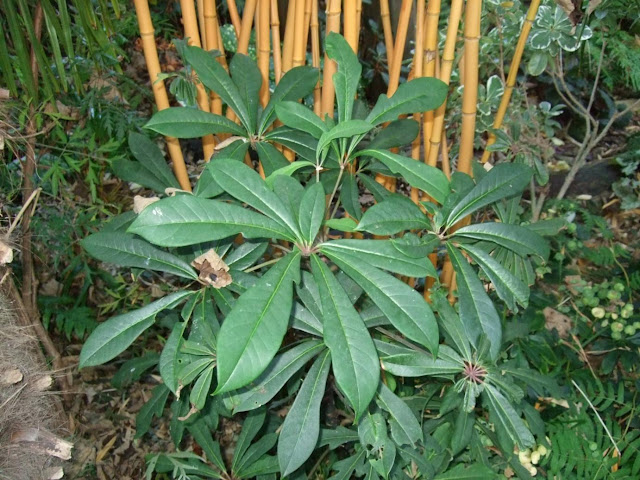 |
| Schefflera aff. rhododendrifolia |
What I find most fascinating about it all is that, like most people we are familiar with the Schefflera arboricola, a common houseplant found virtually all over the world. Even in tropical regions where this plant can thrive permanently outside, it is still used as a houseplant there. Then all of a sudden there are now Scheffleras available that can be grown outside, in our gardens, in cold temperate UK. And for a plant exoticist like me it is extra exciting.
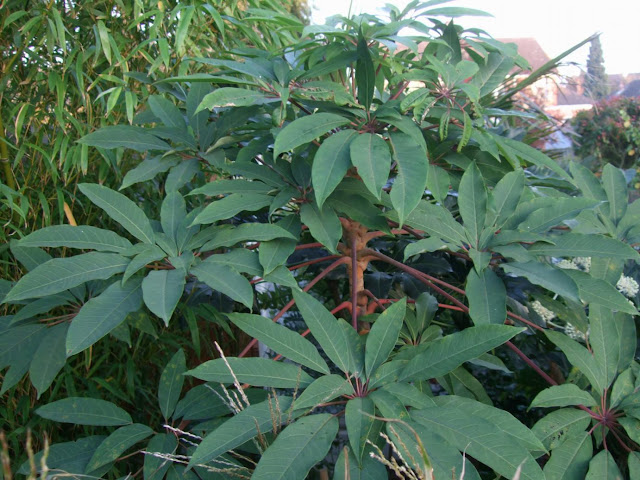 |
| Schefflera kornasii |
This blog post might rouse more questions than answers especially to those interested in trying out these plants for the first time, or thinking of adding more to their existing collections. This is just a condensed post and hopefully I'll be able to do the lengthier version in the next few months. There are several more new species about to come out from some of the nurseries here, also from high altitude collections and I'm keen to try them in our garden as they come along. And yes, more blog opportunities in the future :-)
Mark
Email This
BlogThis!
Share to X
Share to Facebook
Share to Pinterest






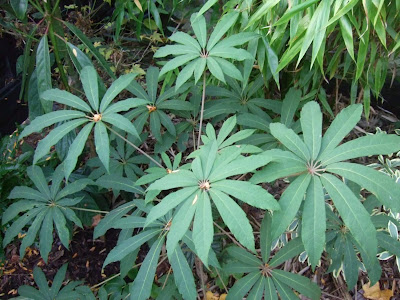

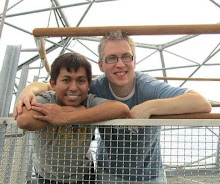 This gardening blog follows our journey as we create our Tropical and Exotic themed garden. We hope you'll enjoy the journey as much as we do. We started our Exotic Garden in 2005 and this site will show its development, as well as our travels, both abroad and within the UK to gardens, nurseries and friends.
This gardening blog follows our journey as we create our Tropical and Exotic themed garden. We hope you'll enjoy the journey as much as we do. We started our Exotic Garden in 2005 and this site will show its development, as well as our travels, both abroad and within the UK to gardens, nurseries and friends.













I think they are very cool looking. I especially like that last one kornasii. Of course not hardy here but enjoy looking at yours and how you plant them with other things.
ReplyDeleteCher Sunray Gardens
Schefflera taiwaniana is like a giant lupin.
ReplyDeleteI have to have one! Trouble is, every time I think about buying one, the price makes me wince. I have a space where one would go very nicely, so look forward to hearing your recommendations re hardiness and cultivation. Next summer shall be a Schefflera Summer.
ReplyDeleteBTW: I'm so glad I found your blog at last - I followed your link on Twitter. I can't think why I haven't visited before.
Thanks Cher! I suppose in your zone it's pushing it a bit but the hardiest of the lot seems to be S. taiwaniana, so that could be worth a try in your garden :)
ReplyDeleteEsther, we used to grow Lupins not for the flowers but for the araliad looking leaves :)
Hi Victoria, glad you found us :) we've been reading your blog for quite some time and admire your garden especially we're both into exotic/tropical style of gardening. Not all scheffleras are as pricy as they once were, just a matter of looking around. As soon as I get the chance I'll email you a couple of places where we sourced some of our plants and their prices are reasonable.
Mark, your earlier posts got me very intrigued about schefflerias, but they are impossible to find locally here in Northern California. I'm hoping to redo our tropical bed next spring (currently planted with lots of gingers) so I will continue to look for that elusive S. taiwania and others.
ReplyDeleteI look forward to that in-depth post :-).
Gerhard
:: Bamboo and More ::
Your passion for scheffleras is contagious.
ReplyDeletePlant-hunter sounds like the best job in the world ...
Smuk plante.
ReplyDeleteTak for kigget.
I would love to try one in my garden! I hope you do finish that blog post and tell us all about these beautiful plants! I didn't realize there were so many. I only know the houseplant.
ReplyDeleteBeautiful pictures, every one of them!
ReplyDeleteI heard that some growers are realizing the Scheffleras as a whole are not as hardy here in the U.S. as expected. Rather than ramping up offerings they are cutting way back. Just a rumor, and of course I don't like it!
(Gerhard...do you have a nursery near you that sells Monrovia plants? They are the biggest "distributor" of S. taiwaniana that I know of on the U.S. west coast)
Fabulous plants, and if some prove hardy, I think they will become extremely popular. Like others, I will watch your experiences with them with great interest, and will look forward to reading the full post some time.
ReplyDeleteJust a quick reply for now, got limited internet at the moment. Scheffleras are fabulous plants and will get even more popular in time. I'll try and get that post finished sooner :)
ReplyDeleteIts always a treat to visit and see what's going on in alternative eden, you never let me down. I enjoy my blogging and giving a little insight from an amateurs perspective,you guys are the real deal.
ReplyDeleteWhy thank you Alistair for the lovely words, much appreciated! :) We enjoy blogging and keep it updated as much as we can.
ReplyDeleteHi Gaz,
ReplyDeleteThanks for visiting Tropical Texana the other day. Yes, I love all things tropical even though I don't really live in a tropical place per se.
speaking of which...are you sure you garden in England? Viewing your garden scenes I'd think I was in Malaysia, Singapore, or Thailand. I'm sure to learn a lot visiting your garden blog.
My Schefflera succumbed to frost many years ago, but I'm always looking for varieties that can take both heat and a little frost.
thanks for posting this.
All the Best,
David/ :-)
Hi David, yes definitely in England :) Thanks for the lovely compliment! It's worth trying a few more Scheffleras again. I won't be surprised if you buy a few more next year :)
ReplyDelete